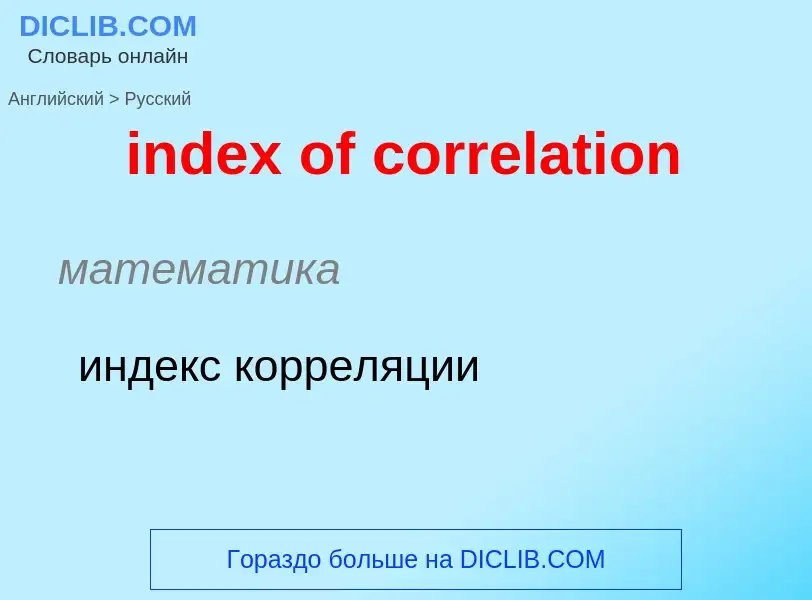ترجمة وتحليل الكلمات عن طريق الذكاء الاصطناعي ChatGPT
في هذه الصفحة يمكنك الحصول على تحليل مفصل لكلمة أو عبارة باستخدام أفضل تقنيات الذكاء الاصطناعي المتوفرة اليوم:
- كيف يتم استخدام الكلمة في اللغة
- تردد الكلمة
- ما إذا كانت الكلمة تستخدم في كثير من الأحيان في اللغة المنطوقة أو المكتوبة
- خيارات الترجمة إلى الروسية أو الإسبانية، على التوالي
- أمثلة على استخدام الكلمة (عدة عبارات مع الترجمة)
- أصل الكلمة
index of correlation - ترجمة إلى الروسية
математика
индекс корреляции
коэффициент корреляции
математика
простая корреляция
تعريف
ويكيبيديا
In probability theory and statistics, partial correlation measures the degree of association between two random variables, with the effect of a set of controlling random variables removed. When determining the numerical relationship between two variables of interest, using their correlation coefficient will give misleading results if there is another confounding variable that is numerically related to both variables of interest. This misleading information can be avoided by controlling for the confounding variable, which is done by computing the partial correlation coefficient. This is precisely the motivation for including other right-side variables in a multiple regression; but while multiple regression gives unbiased results for the effect size, it does not give a numerical value of a measure of the strength of the relationship between the two variables of interest.
For example, given economic data on the consumption, income, and wealth of various individuals, consider the relationship between consumption and income. Failing to control for wealth when computing a correlation coefficient between consumption and income would give a misleading result, since income might be numerically related to wealth which in turn might be numerically related to consumption; a measured correlation between consumption and income might actually be contaminated by these other correlations. The use of a partial correlation avoids this problem.
Like the correlation coefficient, the partial correlation coefficient takes on a value in the range from –1 to 1. The value –1 conveys a perfect negative correlation controlling for some variables (that is, an exact linear relationship in which higher values of one variable are associated with lower values of the other); the value 1 conveys a perfect positive linear relationship, and the value 0 conveys that there is no linear relationship.
The partial correlation coincides with the conditional correlation if the random variables are jointly distributed as the multivariate normal, other elliptical, multivariate hypergeometric, multivariate negative hypergeometric, multinomial, or Dirichlet distribution, but not in general otherwise.


